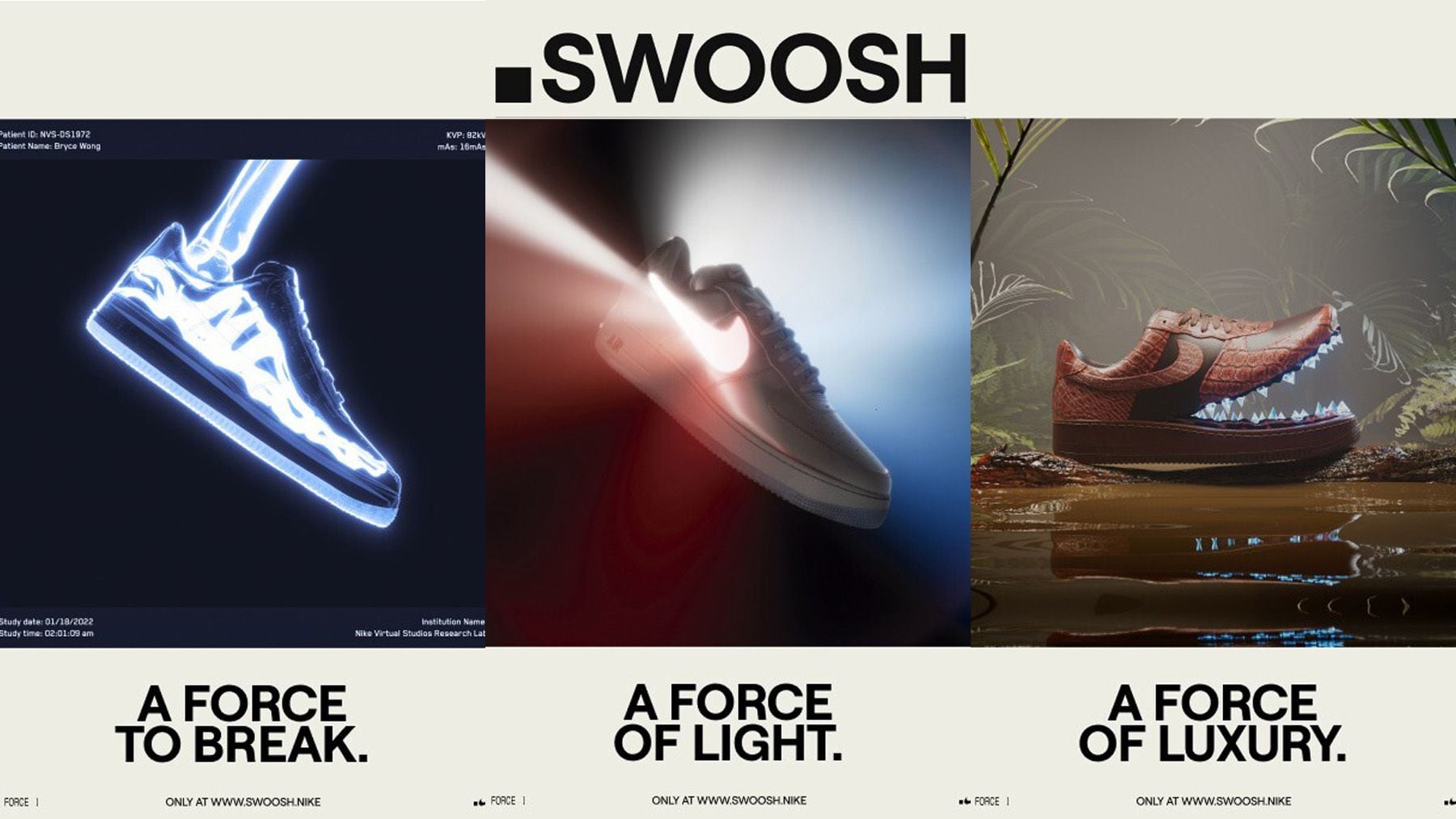Nike Has a Plan to Take Digital Goods Mainstream. Just Don’t Call Them NFTs.
Since Nike launched .Swoosh, its first big web3 play under its own name, late last year, it has been signing up members, holding contests and hosting events to educate people about the platform.
What it hasn’t been doing is throwing around words like “crypto” and “NFT,” even though, technically, NFTs — as in unique assets logged on a blockchain — are what its .Swoosh membership passes are. The same goes for its first collection of virtual products, a series of reimagined Air Force 1s dubbed Our Force 1, emphasising the community aspect of the project, releasing next month.
“Our approach around our virtual creations is, above all else, to provide a sense of utility and benefit, and not to be any speculative asset,” said Ron Faris, vice president and general manager of Nike Virtual Studios. “The underlying technology is what we find engaging to explain concepts like digital ownership, co-creation royalties — that’s what we find exciting because it allows us to reframe our relationship with our members.”
Four Nike members who won an online challenge that involved submitting a creative brief will have their ideas turned into virtual products for which they’ll receive royalties. It’s a “Nike first and very exciting for us,” Faris said. The company isn’t disclosing the royalty amount but the co-creators will receive a financial payout.
Public interest in NFTs has waned since the bottom fell out of the crypto market at the end of 2021, but even so, a number of fashion companies have continued to invest in NFT projects. Gucci even just signed a multi-year partnership with Yuga Labs, creator of Bored Ape Yacht Club. Typically, however, these efforts have focused on fan communities of 30,000 members or fewer, often with high price tags attached.
Nike’s .Swoosh members already number about 330,000, according to Faris, and it has deliberately sought out crypto novices as much as natives. The company held 15 .Swoosh events in different cities around the US, in locations such as New Orleans and the South Bronx in New York that Faris said have historically been last to get new technologies.
It makes Nike arguably one of the biggest forces onboarding new consumers into web3, even as it keeps the crypto part of it all in the background. Items from its new digital collection, for instance, will cost $19.82 — a reference to the year of the Air Force 1′s debut — payable by credit card but not cryptocurrency.
There will still be characteristically web3 elements to the drop. On April 18, Nike will send free virtual posters to select .Swoosh members who will then get first access to buy the digital items on May 8. A general access sale begins on May 10. Shoppers won’t buy a virtual sneaker but rather an Our Force 1 box, which they’ll later be able to open to reveal one of more than 100,000 variations of the Air Force 1, including plays on real AF1s the brand has released over the decades, newly augmented for the digital world. In one example, the “Citrus” AF1 twists above a glass, filling it with fresh orange juice.
The shoes will all be displayed in a gallery, though buyers can also leave their boxes closed if they prefer, like collectors with toys in sealed packaging. Buying and selling won’t be an option at first to give users time to get familiar with the products and avoid users buying shoes to flip at inflated prices, though Nike plans to share more details about how members will be able to buy from one another in the summer.
The virtual shoes will have different utilities, like access to physical products or experiences. Nike plans to make them wearable in certain online games as well, and it will let owners download the underlying 3D files so they can customise their items. In this regard, Nike is taking influence from RTFKT, the virtual product studio it acquired in 2021, which has encouraged its customers to learn 3D tools and get involved in the creation process.
Nike’s approach is meant to be beginner-friendly though. Several of the takes on past AF1s were selected by Nike’s online community over the past months in a series of tournament-like voting rounds. With its co-creation challenge, the company chose to have contestants submit creative briefs with themes and colour palettes rather than asking them to create virtual shoes because many of its members “don’t have access to the level of technology that’s needed to create 3D design,” Faris said. The company’s goal with .Swoosh is to “democratise” that sort of access, he said, noting .Swoosh started with the AF1 as its canvas because it’s the company’s “most democratic shoe.”
It’s also reportedly the brand’s top seller of all time. For a company as large as Nike, the world’s biggest sneaker maker, a niche project of a few thousand members will hardly move the sales needle. It benefits the brand to make its virtual products a mass play. While Faris said they’re still in a test-and-learn phase to see how customers engage with the digital goods, it’s evident Nike sees an opportunity worth exploring.
“We believe that there’s a great appetite for us to create this marketplace in the future that meets the consumer where they are across digital realms or physical realms, harmonizing products, services and experiences,” Faris said. “As we learn more, we’ll see where that takes us.”


